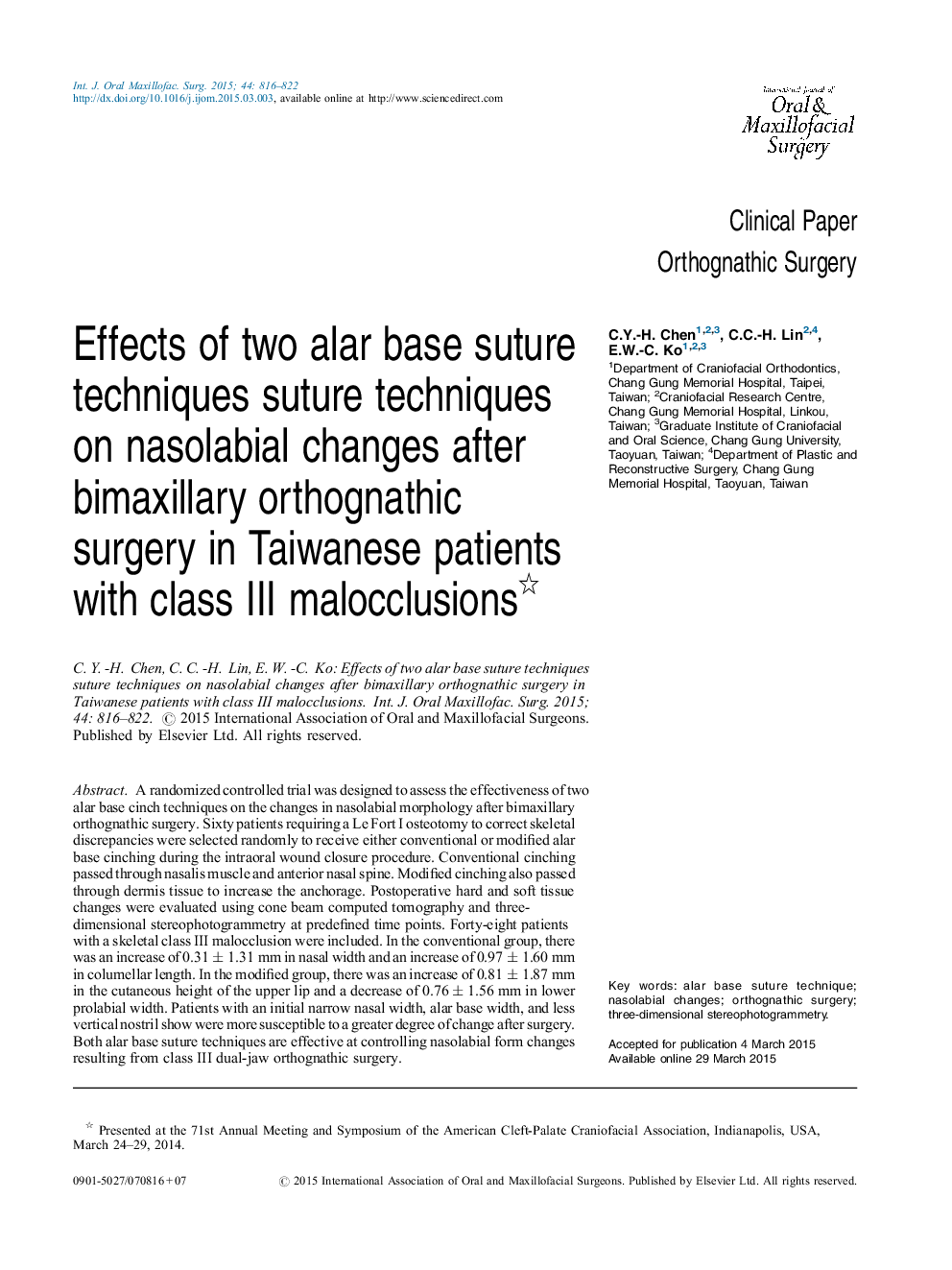| Article ID | Journal | Published Year | Pages | File Type |
|---|---|---|---|---|
| 3132428 | International Journal of Oral and Maxillofacial Surgery | 2015 | 7 Pages |
A randomized controlled trial was designed to assess the effectiveness of two alar base cinch techniques on the changes in nasolabial morphology after bimaxillary orthognathic surgery. Sixty patients requiring a Le Fort I osteotomy to correct skeletal discrepancies were selected randomly to receive either conventional or modified alar base cinching during the intraoral wound closure procedure. Conventional cinching passed through nasalis muscle and anterior nasal spine. Modified cinching also passed through dermis tissue to increase the anchorage. Postoperative hard and soft tissue changes were evaluated using cone beam computed tomography and three-dimensional stereophotogrammetry at predefined time points. Forty-eight patients with a skeletal class III malocclusion were included. In the conventional group, there was an increase of 0.31 ± 1.31 mm in nasal width and an increase of 0.97 ± 1.60 mm in columellar length. In the modified group, there was an increase of 0.81 ± 1.87 mm in the cutaneous height of the upper lip and a decrease of 0.76 ± 1.56 mm in lower prolabial width. Patients with an initial narrow nasal width, alar base width, and less vertical nostril show were more susceptible to a greater degree of change after surgery. Both alar base suture techniques are effective at controlling nasolabial form changes resulting from class III dual-jaw orthognathic surgery.
